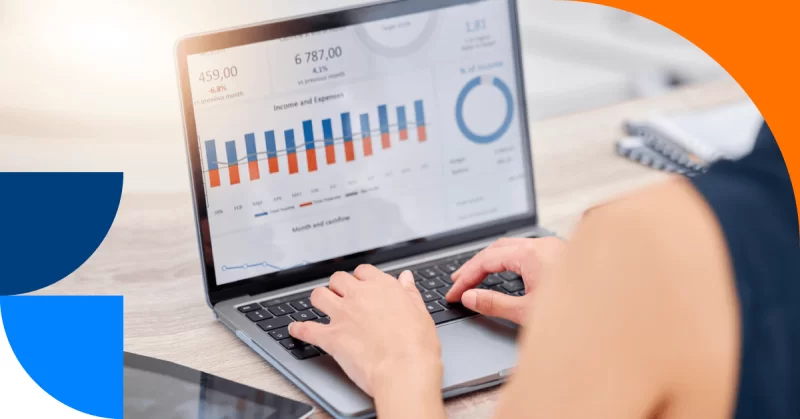How To Effectively Manage And Analyze Big Data In eLearning
Everyone seems to be talking about big data these days, from marketing experts to IT gurus. There’s a lot of information about where to find it and how to mine data resources, but analytics are only valuable if they facilitate meaningful change.
Analytics are only valuable if they facilitate meaningful change.Share on
The real question is “what are you going to do with all those stats, charts, and percentages that you’ve been collecting”?
Here are 7 helpful tips for managing, organizing, and analyzing your big data so that you can optimize your eLearning program.
1. Find Your Key Data Resources
The challenge that many eLearning professionals face is knowing where to find big data. Instead of trying to pick-and-choose the best sources, you should broaden your scope and collect as much data as possible.
Keep in mind that you’ll always be able to narrow it down later. eLearning course analysis, Learning Management System analytics, social media polling, website stats, and eLearning focus group findings are just a few of the data resources you should look into.
2. Whittle Down The Data
Once you’ve found all of your data resources, it’s time to compile all of the information and whittle it down.
Some data will be more valuable than other, depending on your needs. So, set some goals and objectives before you start the big data analysis process. Be as specific as you can and make a note of any question that need to be addressed.
For example, if you are trying to improve your employee performance, you must clearly identify which skills or tasks you are focusing on and how you are going to measure their current proficiency. However, you should never toss out any of your data. Even if you aren’t going to be using it now, it may be valuable in the future.
3. Look For eLearning Trends And Patterns
You’ll probably notice that some eLearning trends and patterns are emerging as you begin to analyze your big data.
If you’ve chosen data that address your goals and objectives, then these trends are going to provide you with some much-needed answers. For example, your LMS analytics may clue you into the fact that your task-based simulations are too rudimentary.
As a result, your learners aren’t getting the skills or experience they need to improve their performance. Thus, you may need to include more realistic elements and conduct a successful and thorough task analysis.
When you notice a trend, jot down your observations and any ideas that immediately come to mind. Once you’re finished analyzing the data you can go back to your notes and start creating a plan of action.
4. Create A Big Data Priority List
If you have several goals or questions, it’s wise to create a big data priority list, so that you can focus on one issue at a time. Which problems need to be addressed right away and which can wait until the next data analysis session? Any issues that are preventing your online learners from getting the full benefit of the eLearning course should be handled immediately.
For example, a module that is too challenging can lead to online learner frustration, which decreases their motivation and engagement. Carefully analyze eLearning feedback received from online learners, as well as LMS analytics to identify the problem areas and how to improve the overall eLearning course design. One option would be offering supplemental eLearning activities or resources to fill in the preexisting knowledge gaps.
5. Keep Big Data Under Virtual Lock-And-Key
Big data is a valuable asset, which is why it should always be protected. Make sure that every source is encrypted and all of the information is verified. Retailers enact online security measures, such as masking data, to keep their consumer information safe. It’s equally important for eLearning professionals to do the same with their learner information and eLearning course analytics.
Make certain that all of your connections are secure and that you have authentication protocols in place. Also, keep a close eye on who has access to your data and how they are using it. For example, you may choose a few members of your eLearning team to manage and analyze the data once a week.
6. Choose Scalable Analytics Tools
Big data will only get bigger over time, especially if you are planning on growing your organization in the future.
As a result, you must have a big data analytics tool that is scalable and flexible. Some of the most effective learning analytics tools in the eLearning industry are Learning Management Systems. They give us the power to track learner progress and offer insights into their habits and behaviors. Research the reporting features of your current Learning Management System, or look for a new one that can evolve with your organization.
Don’t hesitate to ask about their encryption measures to ensure that your data is kept safe, regardless of whether it will be stored on the Cloud or locally hosted.
7. Know When It’s Time To Outsource
If you don’t have the time or resources to manage your big data, you may want to think about outsourcing. There are a number of big data consultants who can help you monitor and analyze the information that you already have, and discover untapped sources of data. Chief data officers can also improve your eLearning ROI by identifying areas for improvement and pinpointing patterns that you may have missed.
These big data management and analysis tips can be used in every eLearning niche, particularly the corporate eLearning sector. If your eLearning strategy isn’t bridging performance gaps or improving task proficiency, then it may be time to take a closer look at your big data.
One of the most valuable sources of data is your audience. Read the article 7 Tips To Create An Effective Constructive Feedback System For eLearning to discover how to create a more effective, constructive feedback system for your eLearning program.


